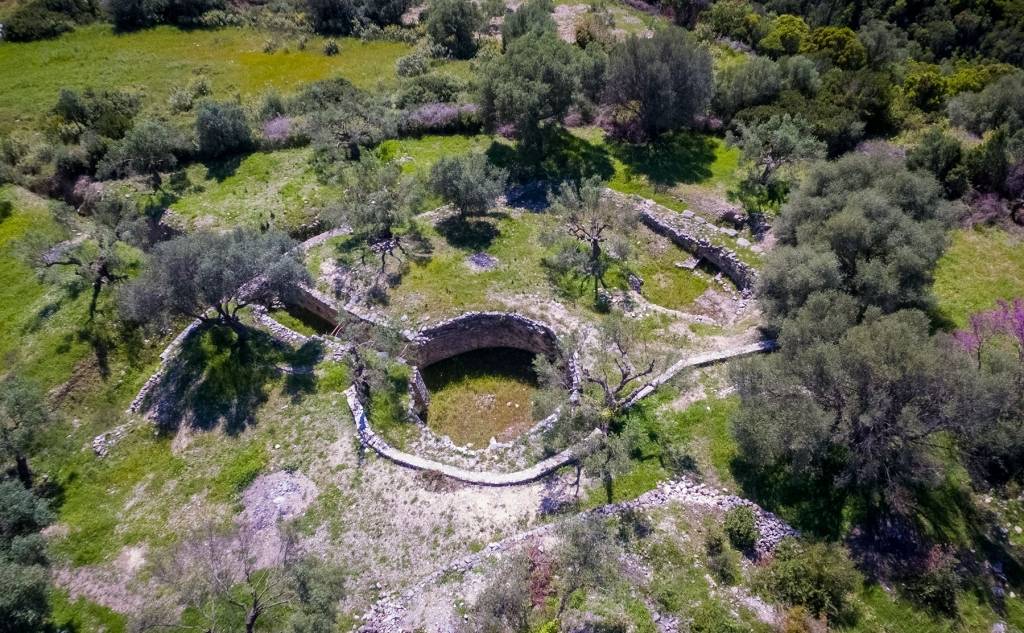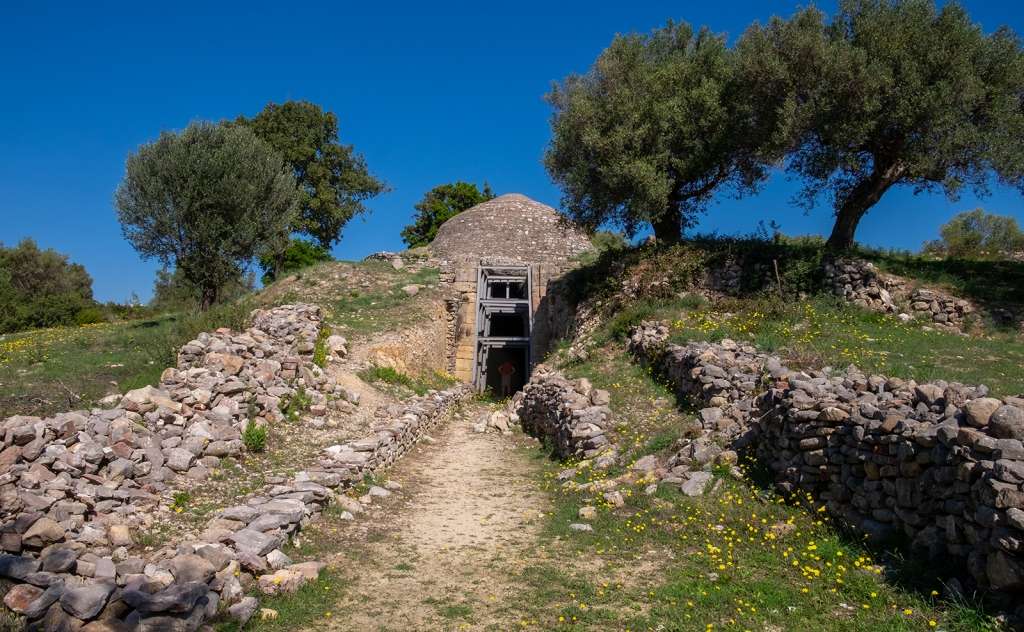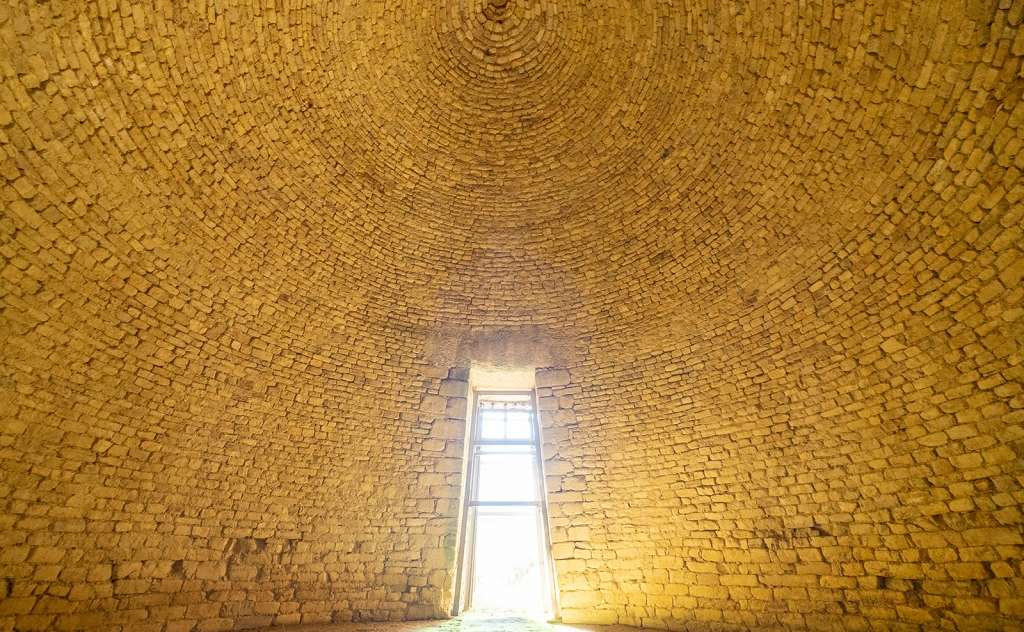Peristeria (Archaeological site)
The archaeological site of Peristeria has been characterised as one of the most important centres of the Mycenaean world, mainly due to the wealth of its gold findings and the size of its buildings dating back to the 2nd millennium BC. It is no coincidence that archaeologists call it "Mycenae of the Western Peloponnese".
The hill of Peristeria is 1 kilometre from the village of Myro and 8 kilometres from Kyparissia. It is a natural fortress, as its three slopes are steep, and the site has smooth access only from the south side. The most important ancient findings uncovered are three vaulted tombs within the archaeological site, a vaulted tomb south of the hill, part of the Palace and several residences. A significant number of objects were found in all of them, such as gold jewellery and items of daily use. Today, the objects are exhibited in the Archaeological Museum of Chora.
The excavations began under the auspices of the Athens Archaeological Society headed by archaeologist Spyridon Marinatos and continued systematically until 1965. In 1976, the excavation work was repeated with Professor Georgios Korres until 1978.
The oldest constructions date back to 2200 BC. and are located around the large restored vaulted tomb. In fact, it is speculated that the largest vaulted tomb may even belong to King Nestor, the legendary King of ancient Pylos. The tomb is preserved in excellent condition, while its acoustics are impressive.
To the west of the hill is the smallest of the vaulted tombs, with a diameter of 6.90 metres. Only a 2-metre-high part of its dome is preserved. It dates back to 1200 BC, and the most important findings include a gold cup (height 13.5 cm), many gold leaves, and gold jewellery pieces. Military equipment was also found in the same grave, an element that testifies to the status of one of the dead. No metal objects were found in the other vaulted tomb (100 metres south of the archaeological site), which had been used for more than 15 burials.
The findings show that the hill, with its buildings, was used from the Middle Helladic era (2050-1680 BC) until the end of the Mycenaean era (1680-1180 BC), while there are also residential remains from the Early Roman times, the era of Nero (37-68 AD). Although the vaulted tombs have been robbed of their precious items since antiquity, the salvaged objects testify to the inhabitants’ wealth and their contacts with Minoan Crete. Finally, after the decline of Peristeria, around 1400 BC, another Mycenaean centre developed in the region of Mouratiada, which is identified with the Homeric Amphigenia.








